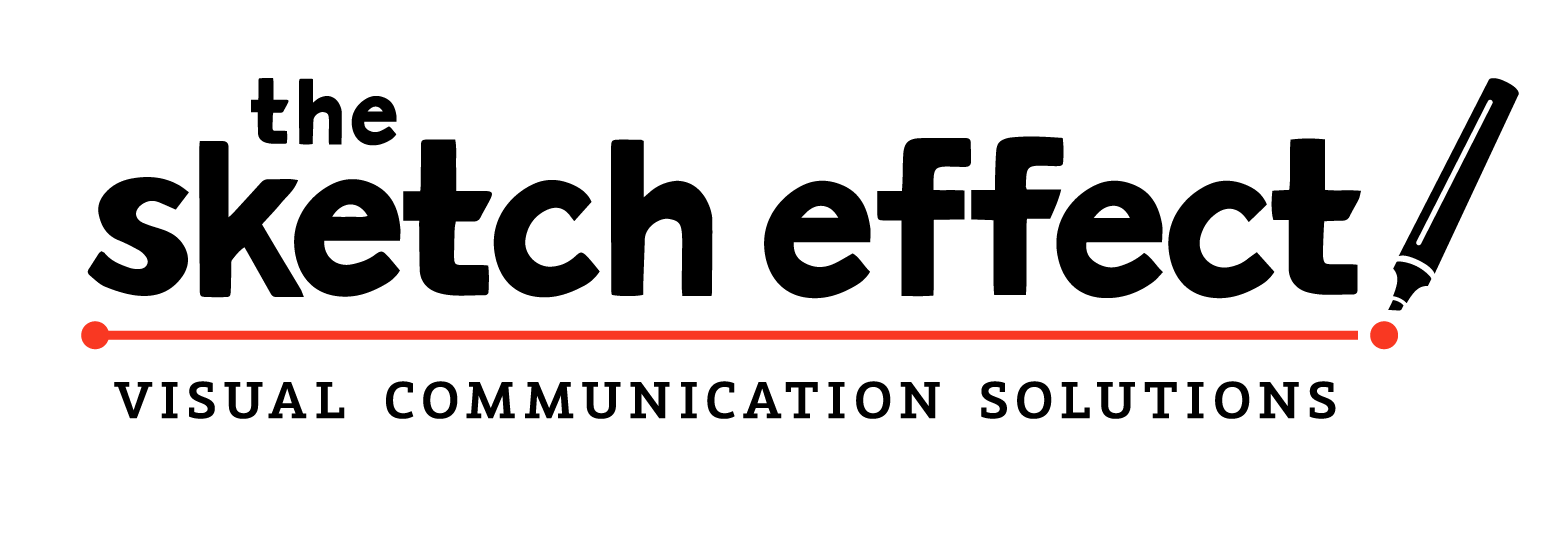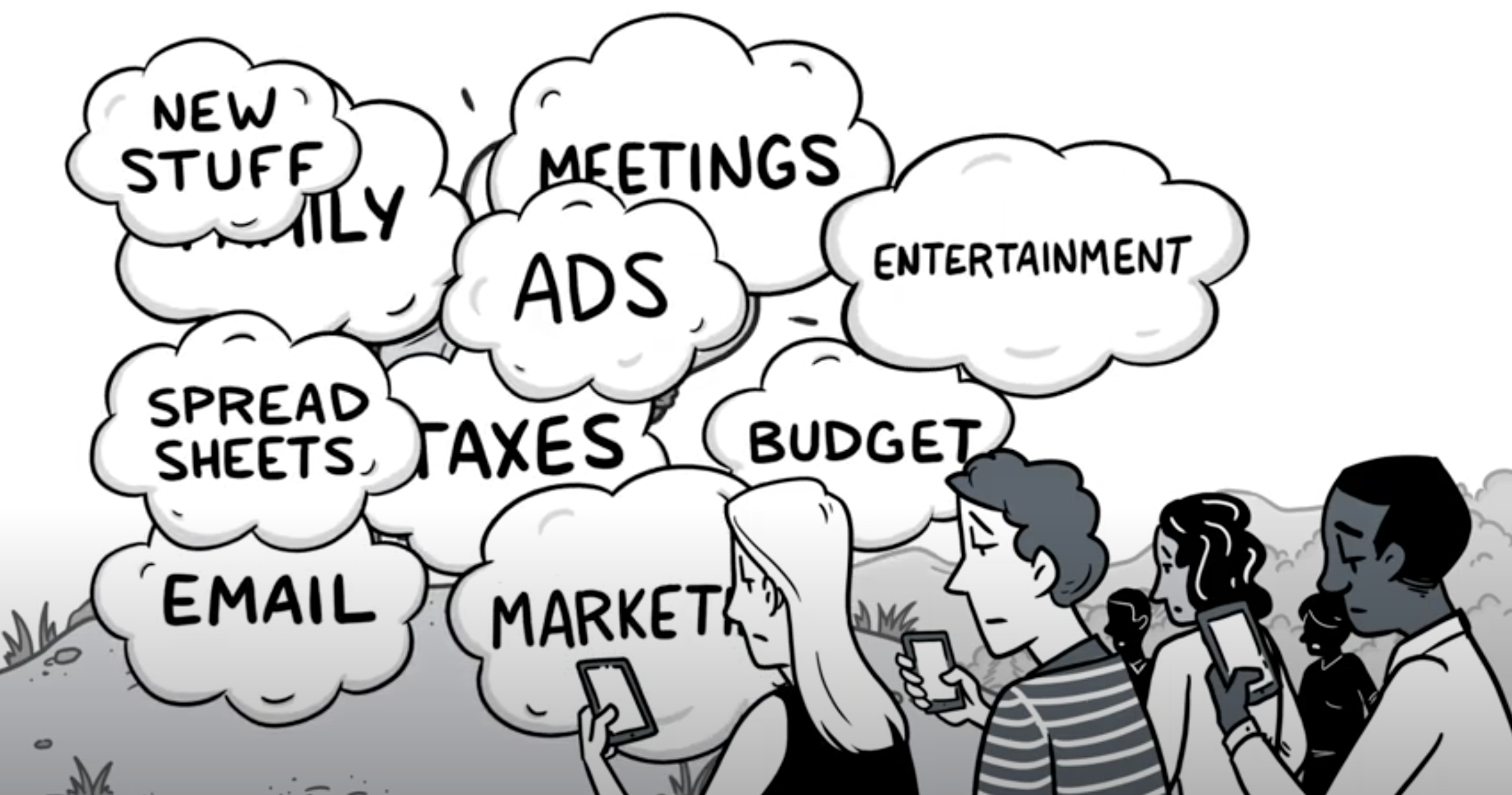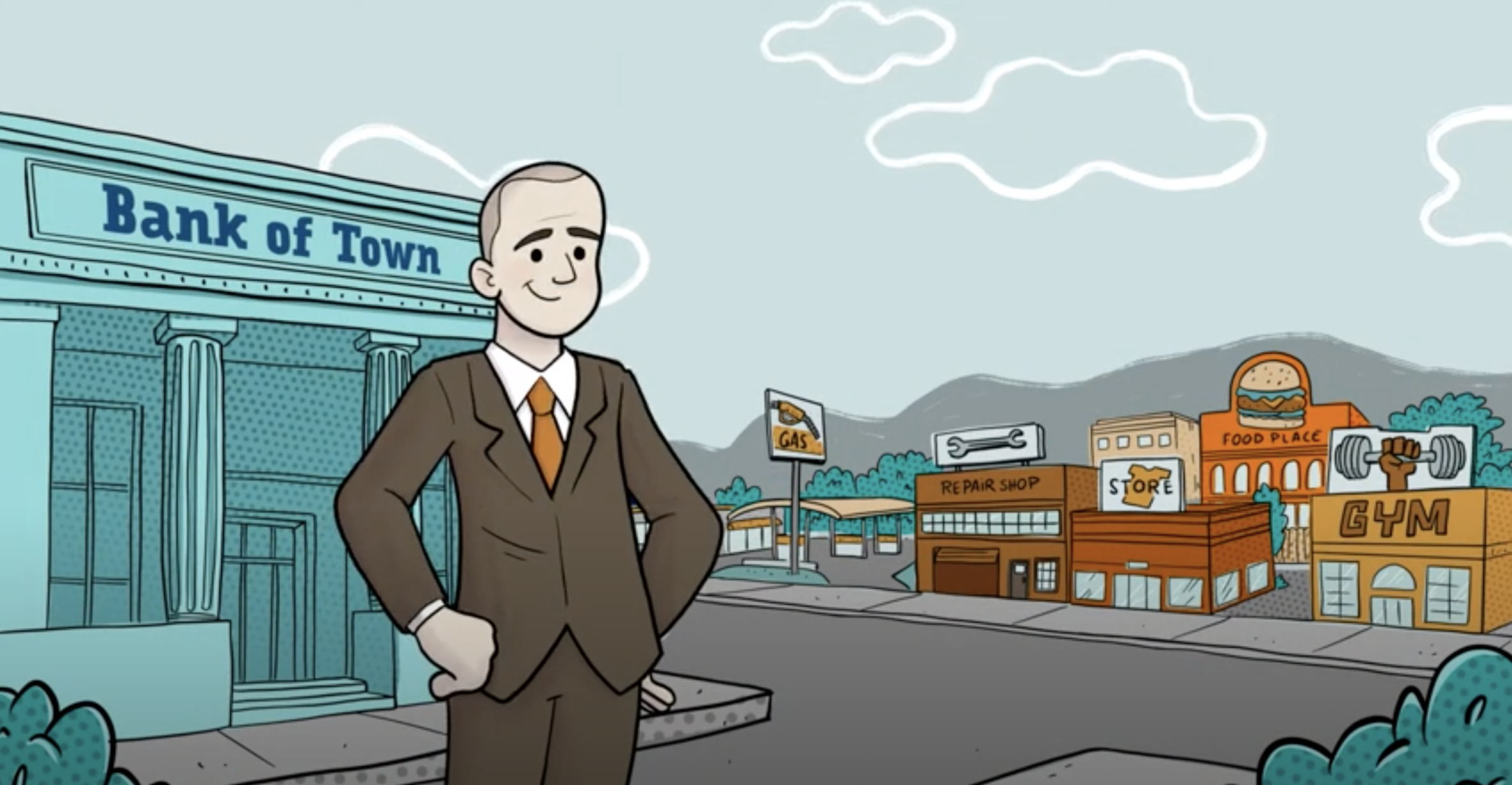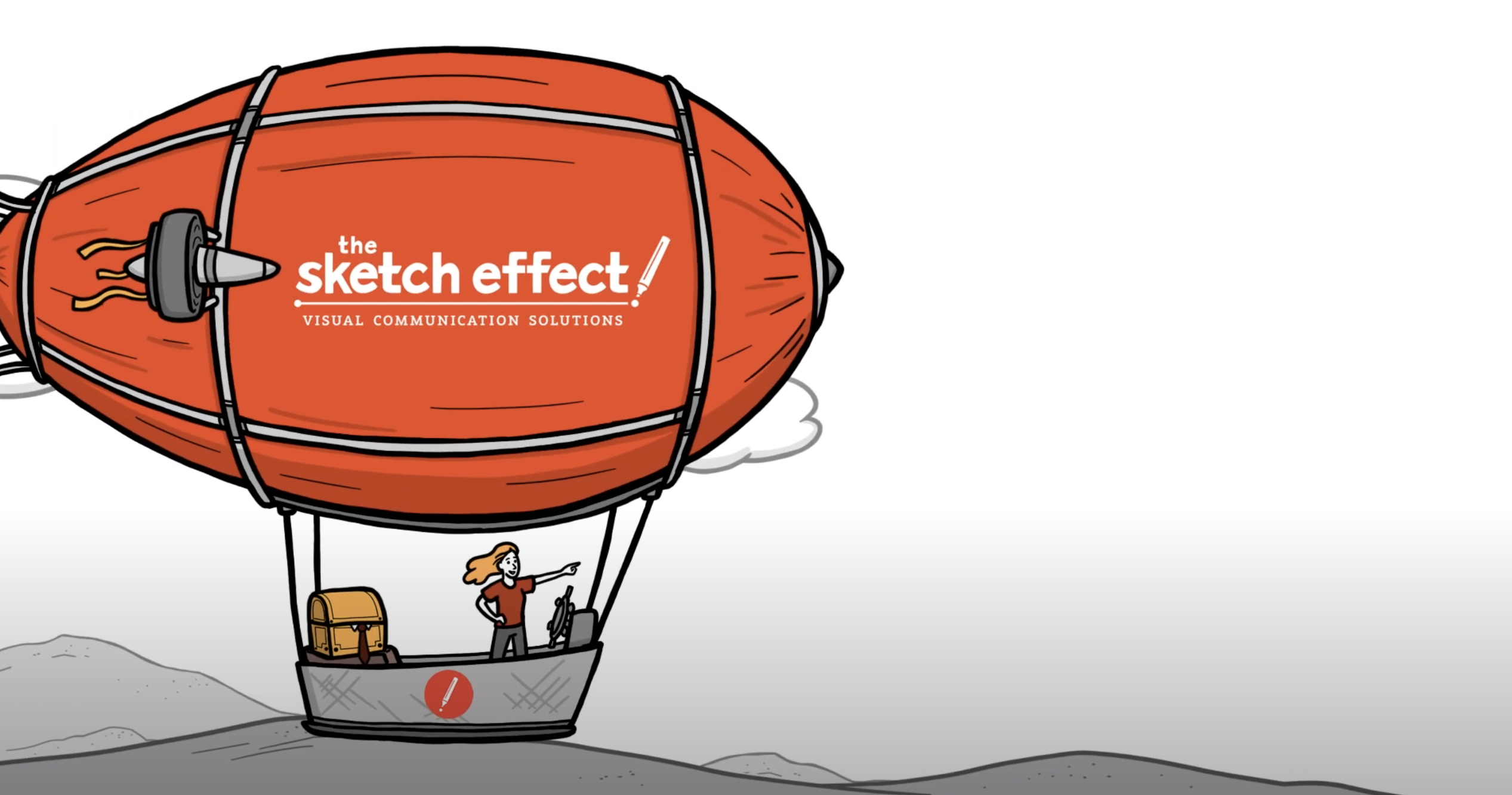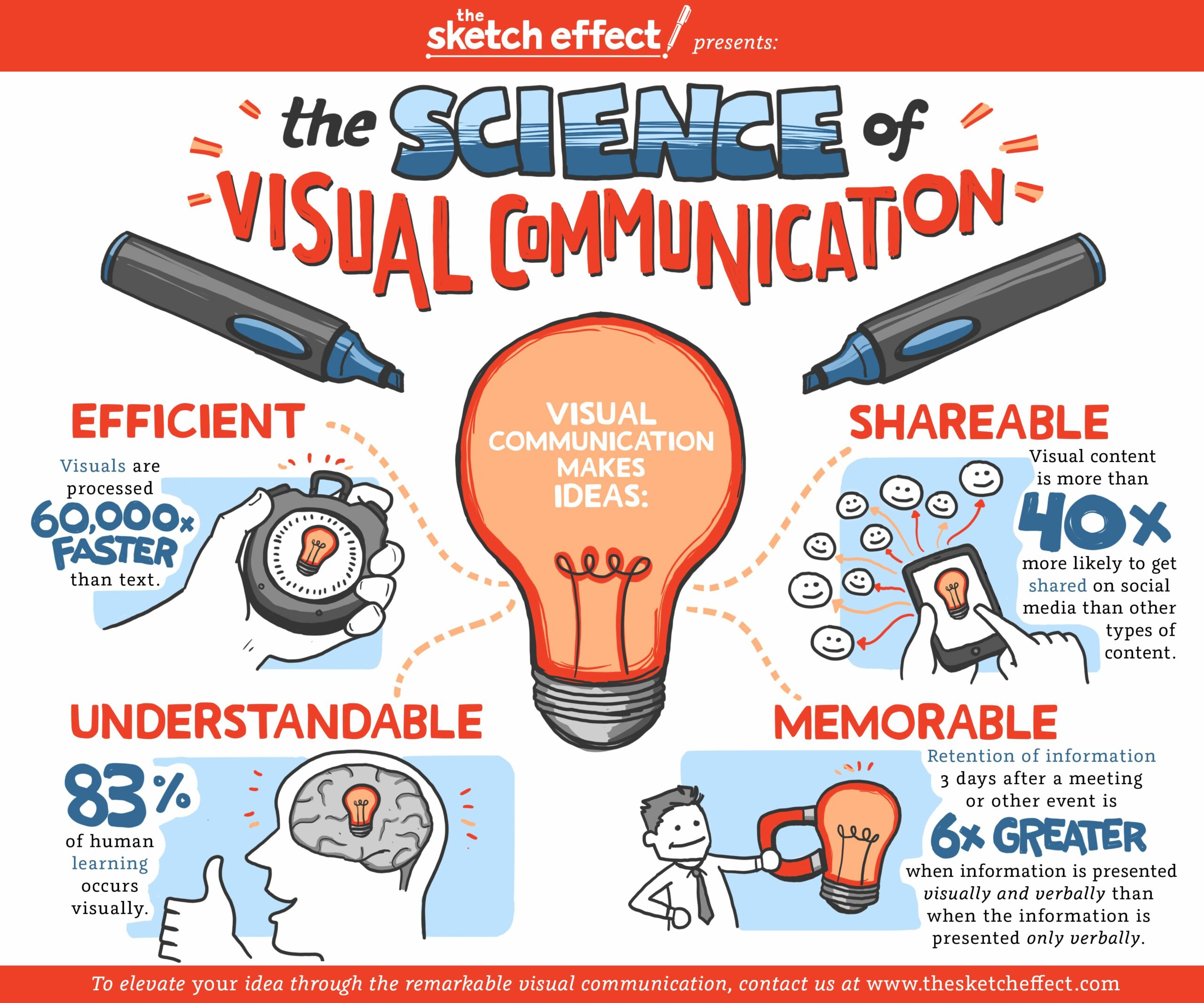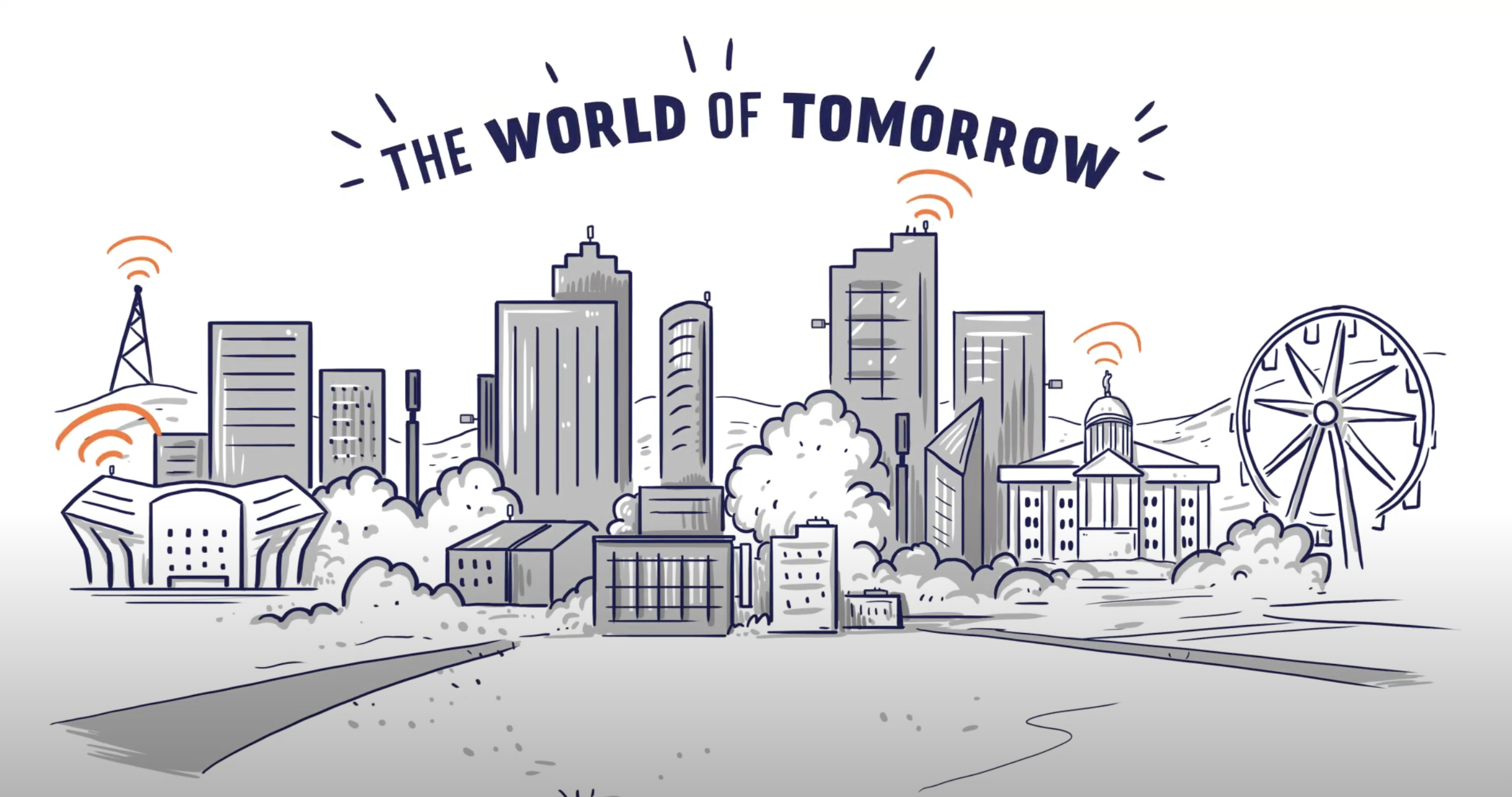We all love animation. From the animated cartoons we watched as kids to the latest and hottest animated music video, there’s something about seeing visuals come alive that captivates and inspires us. But video animation isn’t just for children, and it isn’t just for the entertainment value only.
In fact, video animation services have found a comfortable home in the world of corporate life and for the modern adult professional.
There are three reasons why.
The State of the Modern Adult Professional
First, we live in an age of non-stop distractions. On any given day, we are bombarded with hundreds and hundreds of digital messages…emails, texts, radio ads, YouTube ads, TV commercials, phone calls, Tweets, Instagram comments, Slack updates, and the list goes on.
We also get hammered with non-stop physical messaging as well…billboard ads, signs, handouts, memos, snail mail, etc.
You get the idea: we are constantly distracted. It’s hard to focus on any one particular thing and, as a result, our attention spans have never been shorter.
Second, we’re busier than ever. The average modern adult is overworked and overwhelmed, jumping from task to task, project to project, call to call, or meeting to meeting. Although modern technologies have unlocked countless new efficiencies and productivity shortcuts, we are a busier generation than any before us.
As a result of this busyness, we don’t have a lot of margin in our calendars or discretionary time in our day. We wish we did, but the reality is we need things to be quick and efficient.
Third, we are an increasingly “visually literate” population, meaning that we are conditioned to receiving information through visual mediums and also to communicating information through visual mediums. Most of us (especially Millennials and Gen-Z’ers) have grown up consuming and sharing information through pictures, images, and videos.
For example, when we need to learn how to fix the disposal machine, we look up a YouTube video. When we’re catching up on the news, we’re watching a short clip online or tuning into cable news. When we communicate with friends or family, we send emojis, memes, and gifs. When we catch up with long-distance family members, we hop on a Zoom video.
Speaking of Zoom, this is especially true in the age of Covid. Now more than ever, we are used to communicating through screens and with visual aids.
Because of these three reasons (distractions, busyness, and our visual literacy), Video Animation fits perfectly into the landscape of the modern adult or corporate professional. We’ll explore these reasons further in the final section below.
What is Video Animation?
So, what is video animation? Although this is kind of a no-brainer, video animation is when static visual assets are given movement and turned into a moving sequence. This moving sequence is typically done in a narrative fashion with a clear beginning and end, often with characters, voice-over, music, and sound effects to drive that narrative.
Traditionally, video animation was produced by hand and frame-by-frame. These days, however, the overwhelming majority of video animation is done using computers and animation software.
When it comes to Video Animation used in the corporate, professional sphere, there are four main types:
2-D Animation
2-D Animation is the most familiar of animation styles. This type of animation features 2-D assets which are then animated together. Although the look and feel of these assets vary drastically, 2-D animation is usually reminiscent of a cartoon or comic, employing character-driven imagery that evokes classic animation or the newspaper “funnies.”
This style of animation is created primarily using digital animation programs. Most commonly, animators will create raster images (based on pixels) in a program like Adobe Photoshop, and then employ these images in the animation using programs like Adobe After effects, Toonboom, and others.
At The Sketch Effect, we illustrate all our 2-D assets digitally by hand, in-house, and custom to each client project. This makes each video entirely unique to that client, their brand, and their audience.
Many animation agencies or providers will use stock imagery or stock animations that are pulled off the internet. Although cheaper, this approach typically results in an uninspiring final product that looks like every other video out there.
Whiteboard Style Animation
Another familiar, and increasingly popular, animation style is the Whiteboard video. The Whiteboard video features a human hand drawing out the visuals on screen. These are usually then sped up as a time-lapse and then animated further, with color added, movement added to the visuals, or other animation techniques applied.
This style is especially captivating because there’s something mesmerizing about watching an artist create art in front of your eyes. We’re simply drawn to it (no pun intended).
Now, with Whiteboard videos, there is a tremendous range of quality to the final product.
On one end of the spectrum, you have the highly produced, filmed whiteboard videos that will cost tens of thousands of dollars. These videos will leverage multiple cameras, employ a team of illustrators, art directors, and designers, and a squadron of animators. These videos are incredibly engaging…and incredibly expensive.
On the other end of the spectrum, you have Whiteboard videos that are incredibly cheap, costing below $1000. The reason these videos are so cheap is because they are usually fake. They are usually leveraging software or animation tricks to “fake” the artist’s hand. They also leverage stock imagery and templated visuals and color palettes.
So, instead of watching captivating filmed footage of an illustrator sketch out visuals, you are watching a robotic screenshot of a hand with a marker move about the frame as images appear. Although considerably cheaper, these Whiteboard videos often look sterile, amateurish, and awkward. Sometimes, these videos are even DIY, where the customer has to download the software, create the narrative, select the images, and do the animation all by himself or herself. For those with very small budgets, this isn’t a bad option.
At The Sketch Effect, we make Whiteboard videos that are both authentic and affordable. All of our whiteboard videos are “true” Whiteboard videos, meaning we film them in our studio, and they’re created by our staff illustrators. Because our illustrators are creating brand new illustrations on camera, each and every one of our Whiteboard videos are unique and one-of-a-kind.
Motion Graphics Animation
Another great Video animation style is “Motion Graphics” or “Motion Media”. This style primarily leverages shape-based assets (typically created as vector files via a program like Adobe Illustrator) for the animation and emphasizes motion, compelling transformations, and dynamic transitions.
Motion Graphics videos have a look that is reminiscent of a clean and polished infographic or visual diagram, which makes it a great fit for certain brands and audiences who expect a more buttoned-up presentation.
Similar to 2-D animation, Motion Graphics style videos are created using a range of digital animation programs and tools. Many motion Graphics designed will also use stock assets, icons and other visuals pulled from websites or the public domain.
At The Sketch Effect, all our Motion Graphics assets are created by our team of in-house illustrators.
3D Animation
The final style of animation you’ll find is 3-D animation. As the name suggests, this animation uses 3-D visuals in a 3-D space to present a compelling visual story.
All sorts of 3-D animation and design programs are used to create these highly technical assets and require a considerable degree of time and skill to be considered professional-level quality. This style of animation tends to be considerably more expensive and time-consuming than other styles.
The Sketch Effect currently does not offer this style in its suite of Video Animation services.
Approaches to Video Animation
Beyond the look and feel or technical/artistic aspects, the narrative direction is another important aspect of video animation. There are a few reliable approaches to visual storytelling seen in video animation.
Narrative-Based
First, you have narrative-based videos. This approach is by far the most common, as it tends to be the most engaging and relatable. With narrative-based videos, you will typically find a main character (or group of characters) who goes through a journey (simple or otherwise) that leads to a conclusion.
In marketing or sales-oriented videos, the character is usually the customer, the journey is his or her experience with a pain-point and finding a solution (in the form of a product or service), and the conclusion is that character is in a better state thanks to his or her using that product or service. You will often find a call to action at the end of these videos, prompting the audience to do or buy something. Sometimes these narratives are more or less overt.
For more internal corporate communications videos, the character might be the team, staff, or company as a whole. We are usually introduced to a problem with the current state of things, offered a solution to make the state of things better, and finish by showing what the “happily ever after” state will look like once the solution is implemented.
This solution might be a new training plan, a company-wide re-org, a new product, a cultural initiative, and much more. Again, this narrative is often more or less direct and can be made more or less story-like. Depending on the nature of the video, an internal company video may or may not end with a specific call to action.
Whether it’s for internal or external audiences, the narrative approach is always a good one. People love a good story and relate easily to characters.
Just the Facts
As it implies, a “Just the facts” approach to video animation drops the narrative for a more straightforward approach. Instead of characters or a story, this approach simply describes a concept in a direct, no-nonsense way. This is common for videos solely designed to educate around a topic or train a user.
The “Just the facts” approach is used less and less for internal or external audiences, as removing the narrative element makes it less appealing to a viewer.
Conceptual
Conceptual video animations tend to have neither narrative nor facts but are created to evoke a mood or emotion. These videos are primarily for the purpose of entertainment. Rarely seen in the corporate communications world, this approach might be used for branding purposes, certain commercial advertising, or other purposes where what’s most critical is to convey a feeling.
Use Cases for Video Animation
As we’ve touched on, there are two primary use cases for video animation: External communications and internal communications. Let’s start with external.
External Communications
By “external” communications, we simply mean any video animation created for an audience that exists outside of the organization that created it. There are four main purposes for external-facing video animation:
- Marketing and Sales. Video Animation is a great tool for marketing a product or service and converting customers. This medium (especially using the narrative approach) is an easy way to show how the viewer’s life can be improved. Considering that people tend to buy based on emotional reasons, video animation is an easy way to tap into that emotion. Video animation is also great for external product rollouts when it’s necessary to introduce an audience to something brand new, communicate why they should care, and drive them to take the next step.
- Brand-building. Similarly, for an organization that wants to do some basic brand-building (with the ultimate goal of driving conversions, of course), video animation can help do the trick. Videos can be carefully crafted to convey the personality of a brand and reinforce visual elements of the brand (such as the logo, brand colors, and more).
- Explainers. Although its broader goal may be to convert leads, an “explainer” video is created to explain a complex idea or concept related to a product or service. This may be straightforward, such as how to use a product, or it may be more peripheral, such as explaining the science behind that product. Whatever it is, video animation is a great way to explain a concept in a way that audiences will comprehend and remember.
- Recruiting. Finally, for organizations seeking to recruit talent, an animated video is a great way to convey aspects of the organization or the available roles. Instead of a boring job description, a recruiting video will capture potential talent’s attention, show them why they ought to consider applying, and give them a clear call to action to take action and apply.
Internal Communications
By “internal” communications, we are referring to video animation created for an audience that is a part of the organization that created it. This includes staff, contractors, key stakeholders, leadership, and more. There are four main purposes for internal-facing video animation:
- Training. When conducting training, it’s critical to convey information in a way that’s understandable and accessible. If not, the training won’t be successful. Animated videos are a great way to conduct training, either as a supplement to a robust program or as the entire program itself. Training videos can be for all types of training, from teaching how to use new software, coaching employees on soft skills, or how to use specific equipment.
- Rollouts. A rollout is defined as the introduction of a new “thing” to an audience. This “thing” might be new software, a new product, a new way of working, or a new process. The list is endless. In order to make the rollout as successful as possible, video animation is a must. A simple and quick video will communicate at a high level what is rolling out, why it matters, and how the audience needs to react.
- Change Management. Whenever an organization conducts massive company-wide changes (such as a re-org, creation of a new department, removal of a department, or significant changes in process, systems, and structure), people are going to need to know why. An animated video is a great way to communicate that why. Change management can be complex, and video animation makes the complex understandable by making it visual. Even the most intricate of concepts can be conveyed through effective illustrations, icons, and visual narratives.
- Explainers. Similar to externally-facing explainer videos, sometimes internal audiences need something explained as well. If you have a complex or important idea that needs to be explained simply and effectively, video animation is an easy win.
Within each of these categories, there are even more specific use-cases for video, such as employee onboarding, communicating a company’s culture, communication from leadership, employee recognition, messages around diversity, equity and inclusion, philanthropic or charitable updates, and much more.
Interested in learning more about our process and how video animation can help boost engagement for your company?
The Value of Using Animation Video
As we touched on earlier, video animation adds a ton of value to the 21st-century adult and the modern professional. Our distracted, busy, and visually literate population wants and needs video animation to process and communicate ideas. Let’s further unpack the specific value of video animation, for both the audience and those who use video animation (aka a “Client”).
The Value of Video Animation for the Audience
Efficiency. First, video animation is an incredibly efficient way to consume information. As we’ve established, we are all much too busy…so efficient communication is more critical than ever. With video, a viewer can watch for a minute or more and quickly grasp the big idea, why it matters, and what they can do about it. It’s far quicker than reading a lengthy document.
Entertainment. Second, video animation is fun to watch. Because we are so distracted, It’s critical for communication to be enjoyable…the more enjoyable it is, the more likely we are to watch. Video animation (when done right) is entertaining and captivating.
Comprehension. Third, science shows that people learn best when they learn through visuals. Specifically, comprehension goes way up when people consume information through pictures and images. For an audience, video animation will help the idea “click”, help them understand it, and clearly know why it matters.
Retention. Finally, audiences also will remember what they see much better than what they hear or read. Again, the data backs this up. Video animation will help a view retain what they’ve learned long after they’ve moved on to the next thing.
The Value of Video Animation for the “Client”
Call-to-Action. Video animation is an easy way to give your audience a call-to-action. Usually saved for the end of the video, this “next step” is presented to the viewer and then they are encouraged to take it. If your aim is to inspire an audience to go do something (sign up, buy a product, finish the training, etc.), then video animation is a comfortable and appropriate way to do that.
Shareability. If you want audiences to share what they’re learning, video makes this super easy. We all love sharing videos…if you can link to it, you can share it. For external audiences, this is usually done by uploading the video to a website, on social media, or on YouTube. For internal audiences, this is done by uploading the video to an internal website, intranet, or internal software.
Ease of Production. Here’s the deal: making an animated video is way easier than making a conventional video (such as a talking head video). With conventional videos, you have to worry about the on-screen talent, the lighting, the audio, the set. You also have to hire a crew or team and are usually working within narrow windows of time (either to maximize the right lighting, to ensure the on-screen talent can be there, or to utilize the filming location if you are renting it).
Video animation requires none of this. Animation can be done any time (day or night), leverages Voice Over actors who do their work quickly and easily and employs illustrated, visual assets instead of actors, sets, and more. Simply put, video animation is easier than other forms of video.
Less Costly. Directly related to the previous point, Video Animation is less costly than typical video. Assuming you are going for professional-level quality, it is going to require less money to hire an animator or an animation agency than it will be to hire a crew to do not only handle all that’s required to shoot the video but also what’s required to edit the video as well. Learn more about the cost of video production for live-action videos here.
Diversity and Representation. Animation makes it incredibly easy to show a diverse cast of characters. Because you aren’t limited to the on-screen talent that’s available, the people in an animated video can represent a wide range of diversity, including diversity of age, race, ethnicity, gender, ability, and much more.
Global language. Finally, pictures and images represent a global language that is appealing and understandable to people all over the planet. If your communication requires a wider reach that spans languages and cultures, video animation is a great way to transcend these barriers.
Summarizing the Importance of Video Animation in Communication Efforts
In summary, the time has never been more right to leverage video animation for your business communications. As a population, we are the most visually literate in history, with most of us having grown up consuming and sharing ideas through pictures and videos. We are also far more distracted and far busier than ever before. Video animation is an easy way to cut through the noise in an efficient and effective way and appeal to the visual thinker in all of us.
To find out more about video animation at The Sketch Effect, please reach out to our team of animation experts. We can’t wait to help make your ideas understandable and actionable through the power of video animation.
Interested in learning more about our process and how video animation can help boost engagement for your company?

